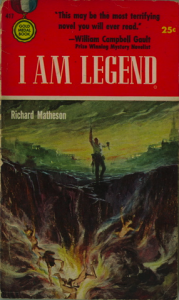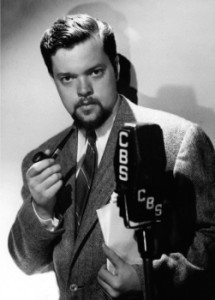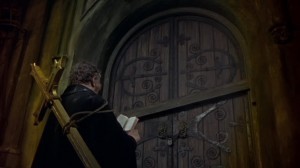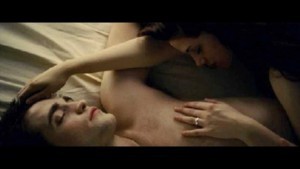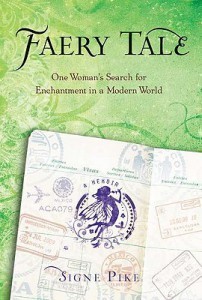Alex Bledsoe's Blog, page 23
October 24, 2012
Writers Day #4
This is the fourth of a series of videos showing how a typical writer (i.e., me) works through the day. This one is about research, something you can often do when real life intrudes on your actual writing time.
October 23, 2012
Announcing Time of the Season
So this year I’m trying something new: through the good folks at Story Vault, I’m releasing a three-story ebook chapbook for the holidays.
It includes:
“Cold Wind,” a Tufa story that updates us on Bronwyn and Craig from The Hum and the Shiver.
“A Ghost, and a Chance,” in which Sir Francis Colby from Blood Groove crosses paths with the most famous Christmas ghosts of all.
“Time of the Season,” a New Year’s story about a very special visitor to the home of Firefly Witch Tanna Tully.
There’s also a special gift: a free download of the song “Cold Wind” by Andrew Brasfield.
I’ll let you know when it’s available, but in the meantime, here’s the cover:
October 22, 2012
Witchcraft Through the Ages (of TV and Movies, that is)
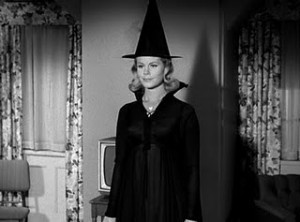
Elizabeth Montgomery in an early episode of “Bewitched.”
Witchcraft has an iffy history in film and television. When I first started doing my Firefly Witch stories, one thing I reacted against was the standard image of the pop-culture witch. Leaving aside the blatant “wicked witch” portrayals, it’s still hard to find anything remotely accurate, let alone sympathetic. It’s not impossible, though.
One of the earliest films about witchcraft, which unfortunately took the devil-worship position, is the unique Swedish/Danish film Haxan. Retitled Witchcraft Through the Agesin English, this one-of-a-kind 1922 silent film depicts witchcraft the way history describes it, then explains how witches were tortured by the Inquisition. It’s impossible not to be horrified by the treatment of the unfortunate women, and to feel sympathy for them. It’s not really a narrative film, yet it’s not a documentary, either. An indication of its strangeness is that the best-known version in English was narrated by William S. Burroughs.
In 1942, Veronica Lake played the witch Jennifer in the romantic comedy I Married a Witch. In the 1958 movie Bell, Book and Candle, Kim Novack plays Gillian, desperately in love with James Stewart. On TV in the 60s, Samantha Stevens (Elizabeth Montgomery) dominated Bewitched(okay, Agnes Moorehead dominated it, but still…). All these characters, though, labored under the kind of strictures common at the time: Gillian and Jennifer lost their magical powers when they fell in love, and Samantha had promised not to use hers to help her husband’s career.* At the time, witches had to be de-powered to allow the “natural order” to assert itself.
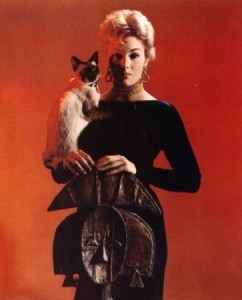
Kim Novak in “Bell, Book and Candle”
These comedies also embraced the common trope that one is “born” a witch; that somehow, the special powers are inherited rather than learned or earned. It’s even possible to read it as saying witches are not actually human, but a different species. But the idea of “innate powers” is a thread that runs through most witchcraft movies, with a couple of notable exception.
In the 70s, one of the most accurate depictions of genuine witchcraft appeared in the seldom-seen George Romero film, “Jack’s Wife (1972). Also released under the more exploitative titles Season of the Witch and Hungry Wives, it’s about a woman who’s drawn into witchcraft as a remedy for the ennui of her suburban life. It’s a blatantly feminist film, and treats the main character’s involvement with magic as empowering. It’s also very much of its time, which means it gets a little arty-for-art’s sake at times.

Jan White in “Jack’s Wife,” enmeshed in the symbolism.
The other notable exception, the character of Willow on Buffy the Vampire Slayer, brought the idea that witchcraft was a learned skill into the popular imagination. Unfortunately, it’s also depicted as something addictive, and an entire story arc was devoted to its detrimental effects on Willow.
The rise of feminism and the idea that women were, I don’t know, actual people capable of doing something other than supporting men changed depictions of witchcraft. The Witches of Eastwick (1987), a pretty dire film from a critical standpoint, did at least show that women supporting each other could defeat even the Devil Himself. The Craft(1997) starts with the idea that outcasts working together can be strong, but then degenerates into standard horror.
My favorite positive depiction of witchcraft is 1998′s Practical Magic. Based (extremely loosely) on Alice Hoffman’s novel, it shows two sets of sisters, younger (Sandra Bullock and Nicole Kidman) and older (Dianne Weist and Stockard Channing), using their powers to protect their family. I confess that I have a total crush on Sandra Bullock’s character (not, I hasten to add, on Ms. Bullock herself).
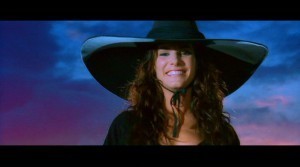
Sandra Bullock in “Practical Magic.”
Together, these movies and TV shows present a very distorted view of witchcraft filtered through society’s concerns. That’s fine as far as it goes–witchcraft can be used as a metaphor, just as anything else can be–but to me, it never captured the true (okay, wait for it…) magic of Wicca/Paganism/the Craft. It was never shown as joyous, rarely as empowering, and certainly never as the religion it truly is. When I began writing my Firefly Witch stories, I wanted to put as much of that back as I could and still tell interesting, dramatic horror/fantasy stories.
If you’d like to check them out and decide for yourself how well I did it, go here. And if I’ve missed an important example, please tell me in the comments.
*I reference this show in my short story “The Darren Stevens Club,” in the first Firefly Witch collection.
October 18, 2012
For Halloween, a tribute to real witches
In October, people think about witches.
Sure, some people think about witches all year round. But in October, the folks who don’t the rest of the year suddenly do. They see pointy hats, pointy noses, pointy chins everywhere. Cauldrons and black cats and flying broomsticks abound.
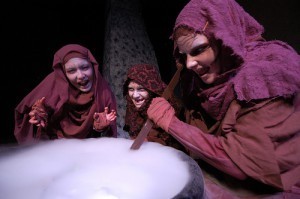
Standard-issue, Church-sanctioned witches. From an Australian production of “Macbeth.”
Except, those aren’t really witches.
Those are bits of folklore, handed down from a time when anyone who disagreed with the status quo (i.e., the Catholic Church’s view of the world) was labeled evil. That applied especially to women who disagreed with their roles in society. Whether they’re burned at the stake or shot in the head (like the brave Pakistani girl in the news), women have suffered at the hands of repressive religion and rigid society for (if you’ll forgive the pun) a hell of a long time.
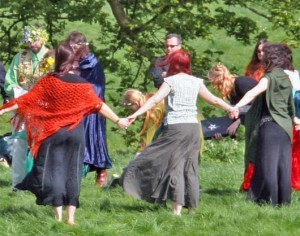
Real witches doing what they do.
Witches are individualists: there’s no central text, like the Bible or the Koran, that lays out the religion for its believers. Each witch decides what he or she* believes, and how best to express that belief. There are common denominators, of course: a belief in a god and goddess, a reverence for nature, a sense of personal responsibility and an open attitude toward sexuality. You can imagine how even these simple things send fundamentalists into apoplexy. And it’s these beliefs that, to me, make a modern witch such an interesting and courageous character, and why I write my Firefly Witch stories.
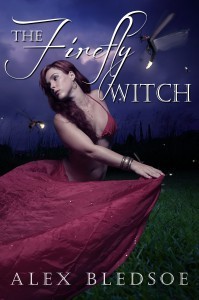
Most importantly, from a common-perception perspective, witches do not worship the Christian devil. Since both God and the Devil are Christian beliefs, you have to be a Christian first to do that. When Christians say that witches worship the devil, it’s a bit like calling a football penalty in a baseball game: it’s applying a standard that just doesn’t work in context.
So when you see a witch depicted with a pointy hat, a wart on her nose, a black cat underfoot and a bubbling cauldron before her, keep in mind: this is propaganda. It’s no different than any group demonized by the majority. A real witch can be found planting a garden, reading a book, supporting women’s rights or buying groceries. You might know a witch already, and not be aware of it. Because that’s the most powerful thing about them, and the one thing the fundamentalists drive themselves into a frenzy trying to obscure: witches are just like everyone else.
Want to know more about real witches? Try here. And here. And here.
Shameless self-promotion: want to read fiction about a real witch? Try here.
*The term is gender neutral. Warlock is not a male witch, it’s something else entirely.
October 15, 2012
Ain’t No Cure: vampirism as disease
(October, the month of Halloween, conjures one name in our household: Dracula! This is the third of a series of posts on various aspects of Dracula and vampires in general. I’ll be giving away a two-pack of my own vampire novels Blood Groove and The Girls with Games of Blood to one lucky commenter per post, so comment early, comment often!)
Richard Matheson, among many other cool things in his career, popularized the idea of a scientific explanation for vampirism in his novel I am Legend. His vampires are the result of a pandemic whose symptoms mirror the classic vampire tropes. That paved the way for this entire subgenre, including comics (Marvel’s Blade, as well as Morbius, the Living Vampire), movies (Korea’s Thirst), and even recent fiction (The Passage and The Strain).
Originally, the idea of blood hunger as a disease had its simplest parallel with diabetes, with blood standing in for insulin. As long as the sufferer “took his medicine,” so to speak, he was safe. For the most part, diabetes is invisible as well, so that the vampire suffering from a “disease” didn’t look any different, either: fangs were minimized, and vampires changed from being aristocrats and noblemen to everyday characters. This removed any sort of moral level and made him just another unfortunate. Eventually stories appeared in which vampires made do with animal blood or blood substitutes (as in True Blood), making the parallel complete.
With the onset of AIDS, a blood-borne disease that came with the social stigma diabetes lacked, vampire stories adapted as well. Suddenly the idea that the very thing that allowed their existence could also cause their demise became the trope of the moment. Even Stephen King worked a twist on it, as his Dark Tower vampires were AIDS carriers. Further, the very real experiences of sufferers were co-opted into vampire fiction, so that vampires became victims not just of biology, but of society as well. Just as AIDS sufferers were shunned and accused of “asking for it,” vampires were depicted as victims who often deliberately sought their condition. And the fear of AIDS dovetailed nicely with the fear of vampires: both could hide in plain sight, and lured you with the possibility of sex. (I’m deliberately not talking about sexuality and AIDS victims in terms of vampire fiction, because that’s a whole other issue.)
And now, with the possibility of biological weapons (what used to be called “germ warfare,” back when Matheson wrote I am Legend), we get tales of mutated viruses that spread like wildfire and create vampire-like symptoms and behaviors.
So where does that leave the vampire?
The classic vampires–Dracula, Carmilla, Lord Ruthven–were unapologetic monsters. They needed no origins, no sympathy, because they embraced their natures. They did not contract a disease, they willingly gave up their souls for the vampiric existence. Only later, when the idea of sympathetic vampire arose with Dark Shadows and Anne Rice, did it become really necessary to find a way to have vampirism not be the vampire’s fault. And what better way than to make it the result of simple biology, rather than a pact with eternal evil?
The problem with this, as with all “explanations” for vampires, is that as soon as they’re explained, they become small and simple. In a way, the idea of a biological explanation for vampires is horror fiction’s parallel to midichlorians: it explains something that needs no explanation, and in the process, utterly destroys its grandeur.
October 8, 2012
Did Orson Welles make Dracula romantic?
(October, the month of Halloween, conjures one name in our household: Dracula! This is the second of a series of posts on various aspects of Dracula and vampires in general. I’ll be giving away a two-pack of my own vampire novels Blood Groove and The Girls with Games of Blood to one lucky commenter per post, so comment early, comment often!)
For a while–we’re talking decades–I’d believed the romantic take on vampires began with Anne Rice. Before “Interview with the Vampire, these creatures were villainous, if occasionally attractive, creatures of the night. After her, they became tortured heroes, as much a victim of their bloodlust as the people they killed.
Yet I’ve had to re-evaluate this after hearing a radio broadcast of Dracula produced and directed by Orson Welles, who played both the Count and Dr. Seward.
In Bram Stoker’s novel, Dracula is not a ladies’ man. He is old, thin, has hairy palms and bad breath. The idea of the “sexy” vampire originated with the theatrical adaptations that played in theaters before movies were common, and became codified with Bela Lugosi (this is covered in great detail in David J. Skal’s excellent book Hollywood Gothic: The Tangled Web of Dracula from Novel to Stage to Screen). Christopher Lee enhanced this in the Hammer films, but in all of these incarnations, Dracula’s attractiveness was just a lure; women might swoon for him, but he could care less.
Welles was a master of the radio medium, as his famous 1938 Halloween broadcast of War of the Worlds demonstrated. He also did many other radio dramas, several of them based on classic works of fiction. But in his production of “Dracula,” done in the summer of 1938, he may have been the first to suggest–okay, to flat-out say–that Dracula’s relationship with Mina Harker was something more than predator/prey.
In the radio drama, which follows the broad outlines of the novel pretty closely, the good guys finally corner Dracula in Transylvania; they have mere moments before the sun sets and he is able to command his vampiric powers. In the script, Dracula’s voice speaks his thoughts aloud, summoning help:
There is one very dear to me who has not answered! My love … Mina. There is less than a minute between me and the night. You must speak for me, you must speak with my heart.
Then, moments later:
Flesh of my flesh, come to me, my love. Come into the night and the darkness, you have served me well, my love, my bride …
Clearly, Dracula feels something greater than mere bloodlust for Mina: he calls her “my bride.” There’s no indication that this feeling is mutual: she responds to him only under his psychic influence. But it’s not a big step to have his love reciprocated, as is now a common trope in vampire fiction. Indeed, the love between vampire and victim has now almost wholly replaced the previous trope of horror and fear.
And did it all begin with Orson Welles?
You can listen to the production starting here.
October 1, 2012
The loss of the epic vampire
(October, the month of Halloween, conjures one name in our household: Dracula! This is the first of a series of posts on various aspects of Dracula and vampires in general. I’ll be giving away a two-pack of my own vampire novels Blood Groove and The Girls with Games of Blood to one lucky commenter per post, so comment early, comment often!)
Recently I came across an article by Elizabeth Russell Miller, an internationally-known expert on all things Bram Stoker, entitled, “The Church Welcomes Dracula.”
The story of this Dublin church honoring Dracula is fun on its surface, but it got me thinking about vampires and religion, a relationship that has lost almost all its potency in the last forty years. When I was a kid, vampires were terrified of all things religious, specifically Catholic icons. There were occasional riffs on that, most famously the Jewish bloodsucker in The Fearless Vampire Killers. But for the most part it was accepted, and accepted seriously: the athiest hero of the Hammer classic Dracula Has Risen from the Grave must become a believer to defeat Dracula.
But as religion faded from its importance in everyday life, it also faded from vampire lore. Anne Rice’s vampires are indifferent to religious iconography, as are those of Buffy the Vampire Slayer. The pantsless vamps of True Blood have no issue with it. And so on. But what has replaced religion in vampire mythology?
Apparently, it’s love.
Love destroys vampires as surely as sunrise, wooden stakes or fire. Where once stood an immortal symbol of the power of the devil, the literal anti-Christ (the vampire’s nightly resurrection mocks Christ’s, for example), we now have tortured, sympathetic heroes. And not even anti-heroes like the magnificently nihilistic Lestat, but actual heroes who try to do good, defeat the bad guys (often more “traditional” vampires) and win the damsel (often without actually biting her). This has culminated in the Twilight, saga, which is all about not doing…well, anything. Once the active hand of the devil on earth, vampires are now horror’s answer to the Amish.
When only the Church (capital “C”) stood between humanity and the vampire, it was understood as a battle for immortal things like souls. It was an epic battle. Powers as old as the universe contended for the soul of a man or woman, a prize so valuable both God and the Devil wanted it. Now…well, the prize is Bella Swan’s virginity. And losing it doesn’t damn her to hell for all eternity; rather, it elevates her into the nouveau beaute’ pantheon.
Now, I’m not a religious person, but as a writer, I understand the maxim that heroes are judged by the power of their villains. Imagine Batman without the Joker, Superman without Lex Luther, or Sherlock Holmes without Moriarty; their stature would be seriously diminished. Similarly, the classic vampire is scary and significant because, within that mythology, even God himself takes notice and stands against him. That’s a powerful trope, and one that’s proven very hard to replace.
When I wrote my two “vampsloitation” novels, Blood Groove and The Girls with Games of Blood, I deliberately left out religion, intending to use it as an element in the climactic third book. Alas, the first two did not exactly fly off shelves or into e-book readers,* so it may be some time before that final novel, Blood Will Rise Again, sees the light of day. But when it does, I hope to recapture some of that classic epic feel, of the idea that what’s at stake (heh) when a vampire meets a human is more than just hemoglobin and an undead booty call. I hope to make it…well, cosmic. That’s the playing field vampires should occupy.
*I must say, though, that the fans of these novels are some of my most passionate; for those that “get it,” they really get it, and I appreciate hearing from them.
September 27, 2012
Writer’s Day #3
This is the third of a series of videos showing how a typical writer (i.e., me) works through the day. This one is about revision, and how some writers get nervous talking about fonts on camera.
September 24, 2012
Interview: Signe Pike, author of Faery Tale
Signe Pike’s 2010 memoir Faery Tale is subtitled, One Woman’s Search for Enchantment in a Modern World. It tells of her journey to the countries steeped in a history of fairy belief, in search of something that would convince her, a cynical New Yorker, of their reality. Through her discoveries and experiences, she not only learns about fairies, but also comes to terms with some deep-seated grief. Kirkus Reviews named it a “Best of 2010.”
I didn’t read it before I wrote The Hum and the Shiver, but we were both working from a similar perspective: I was trying to find a way to present the fae in the modern world, and she was searching for traces of their existence in the same place. I found what I was after with the creation of my mythical Tufa; Signe found her answers in the signs, symbols and coincidences encountered on her journey.
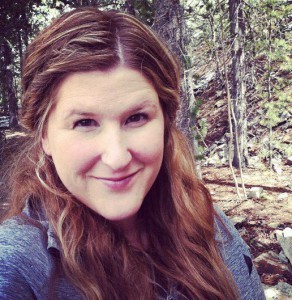 Me: Since you wrote your book, have you second-guessed or reinterpreted any of the experiences you describe in it?
Me: Since you wrote your book, have you second-guessed or reinterpreted any of the experiences you describe in it?
Signe: Surprisingly, no, I haven’t second-guessed any of my experiences. On my journey one of the most important things I learned was to trust my intuition, that inner sense of knowing that we all have and yet too often choose to ignore. And the strange occurrences I experienced when researching Faery Tale were all unquestioningly accompanied by that powerful sense of knowing. I learned to trust that. Once you’ve felt it, you can understand how different knowing is from imagining or thinking. It was what my interview subjects had been telling me all along, they’d say, for example, “I just know what I saw wasn’t fireflies,” with a powerful sense of conviction. They didn’t seem crazy, or delusional, they just seemed absolutely certain. It took experiencing the feeling of knowing that seems to accompany brushes with the unseen world myself to understand what it was they’d been trying to say. The tricky thing about this sense of knowing becomes, How do I describe this experience to readers in a way that makes sense to someone who isn’t experiencing it first hand? Taking it further, how could I describe what I experienced to readers in way that wouldn’t leave them feeling isolated and unable to relate to my experience given that they weren’t there to see or feel what had taken place for themselves? The answer was to approach the experiences from as much of a journalistic perspective as possible. I wanted my readers to be able to be able to make up their own minds and interpret what might have taken place for themselves, not try to shove something down their throats. It disturbed me that there didn’t seem to be a “Middle Way” out there for people interested in esoteric subjects. So many of the books on faeries written in recent years were completely inaccessible to the majority of the population. I decided I wanted to create a Middle Way, an exploration for myself and others who weren’t sure what we thought, but were willing to take a risk, be open and see what secrets existence might have in store.
I have, however, come to realize that putting spiritual experiences or encounters into any sort of box is a rather silly thing to do. Wol, one of my favorite people I met on my journey, said to me one night that what I was undertaking was nearly impossible. “You can’t possibly hope to come out of this with concrete answers. What you’re exploring, it could take years. Decades. You can’t put this sort of thing on a deadline.” He was right. Wol wasn’t a believer in faeries, necessarily, but he respected my journey and supported me in my seeking. Matters of existence like “Are there unseen beings around us?” are explorations that deserve the respect of a lifetime. As such, just because the last page of the book has been turned
doesn’t mean my journey has ended. I do continue to find new ways to interpret the “signs and signals” that I encountered while writing the book. I continue to grow, learn, and expand. I put a fair amount of that on the page. I was lucky to be able to share that with readers and I remain glad that I did. But now I rather enjoy being able to keep my experiences and interpretations just for me. They retain their power more for me that way.
What do you feel is the link, if any, between a person’s ability to sense the world of faery, and creativity?
I believe that creativity and the faerie world are linked in that they are both directly connected to this world of “other”—divine source, God, the spirit world, whatever you believe—our creativity burns within us until it presses us to create something, to birth it, bring it out of the ether. We are, in other words, inspired. We feel that if we cannot just write, paint, sing, cook, plant, plan, whatever your creative outpouring must be, we will surely burst. Our egos tell us “I made this.” But really, I believe that yes, while our fingers might have painted the image, and we used our skills to move the brush just so, we received the inspiration to complete the work from some place outside of ourselves, a place rife with enchantment. The more we learn how to be open to that source, the more we acknowledge and are thankful for the inspirations that come our way, and the more we pay attention to the world around us, that I believe is trying to communicate with us at every moment in time, the more easily we’ll be able to experience that world and everything which calls it home, faeries included.
Do you think the faeries understand, or care, about how they’re depicted in art and literature?
I’d have to say it depends on the faery! They are spirit beings, and as such are unique and individualized, and from our very human perspective. I imagine there are some who don’t want to have much to do with humans at all. There are some who think it’s funny. There are some, as Mr. Brian Froud, artist extraordinaire might tell you, that are quite keen to be painted, heard, felt, or otherwise brought into our consciousness. Then there are some who have a strong desire to communicate their existence to people for bigger ends: so that we will extract our heads from our behinds and start taking better care of the planet and living the best lives we can in harmony with the rest of the natural world. No small mission.
Before the book came out, I was nervous that I might not have done the question of faeries justice. I had been gifted some amazing other-worldly experiences—even some that I’d managed to capture on tape and on camera—and I worried that if the book didn’t perform, if it didn’t reach people, I would be letting this unseen world down. A very wise friend of mine said, “These faeries you believe in. You say they’re pretty ancient, right? They’ve been around for quite a while. Older than mankind itself? And they’re very wise, some of them, right?”
“Yes,” I said.
“And do you think you’re the first person to have written about them in the history of human kind?”
“No…” I was beginning to see how ridiculous my line of thinking had been. The whole world of faeries depends on me! Come on. And I couldn’t help but start to laugh.
“Yeah,” he said, “I really don’t think so much depends on you.”
The point is that they reach out and inspire lots of people (as you know first hand, I’m sure, Mr. Bledsoe!) and there is no wrong inspiration. They just want it to resonate with people and hopefully inspire them to change, grow, love more, be more awake, and make a difference. I’m sure the darker side of faerie reaches out too—and there are authors out there who regularly tune into it. I choose not to. It doesn’t help anything. It doesn’t elevate people, it doesn’t inspire them or help them grow. It just makes people weirder.
What’s the most interesting thing a reader’s told you after reading your book?
Oh, wow. One of the things that lights me up most are the letters I receive. The fact that people are willing to share their own deeply personal experiences or unexplainable encounters they’ve had with me is incredibly moving. I’ve heard of magical events that have happened to people everywhere from Ireland to Appalachia, Australia to Brazil, from believers and doubters alike. I get wonderful suggestions about other places around the world to visit where readers believe I might experience faerie activity. Sometimes I get letters from people who take the idea of faeries quite literally – there was a person convinced that a garden gnome was trapped in their backyard shed and they were in quite a panic, wondering what they should do. But the most touching letters are from those who share their stories of loss and a new faith in the enchantment the world has to offer that rose out of their seeking and their sorrow. Or, even more humbling, the people who say my book helped them heal. I don’t think there’s any higher praise, and it’s letters like that that make me so glad I took a chance and shared my story.
Thanks to Signe Pike for talking with me. Faery Tale: One Woman’s Search for Enchantment in a Modern World is available through all the usual outlets, in all the usual formats. You can visit her website here.
September 21, 2012
Writer’s Day #2
This is the second of a series of videos showing how a typical writer (i.e., me) works through the day. Ever wonder how those signed copies get from an author to a contest winner? Now you can see. And it involves military jets.


